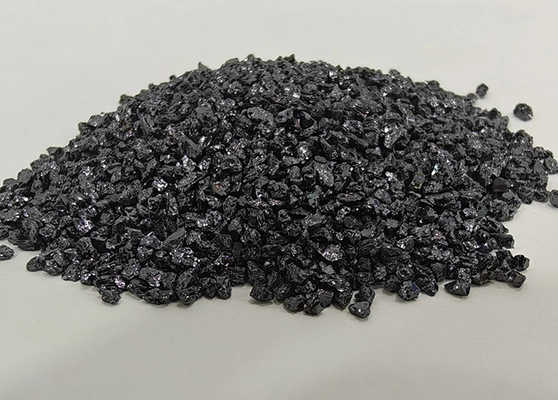Quick Answer: Yes—carbon is classified as a non-metal. However, it is a special non-metal because its different forms (allotropes) span from the excellent electrical conductor graphite to the ultra-hard diamond. This wide range of behavior comes from carbon’s ability to form different bonding networks (sp² vs sp³), giving it properties that sometimes resemble metalloids yet it remains a non-metal on the periodic table.
What Is Carbon?
Carbon (symbol C, atomic number 6) sits in group 14 of the periodic table. It is the backbone element of organic chemistry and life, forming an immense variety of molecules thanks to its ability to make stable bonds with itself and many other elements. Naturally, carbon appears as graphite, diamond, amorphous carbon (e.g., carbon black, charcoal), and—via advanced processing—as graphene, carbon nanotubes, and fullerenes.
Why Carbon Is a Non-Metal
Elements are classified based on characteristic properties such as electrical conductivity, luster, malleability/ductility, and typical bonding. Non-metals generally form covalent bonds, lack metallic luster at room temperature, and are poor electrical conductors (with some exceptions).
- Bonding: Carbon prefers covalent bonding (C–C, C–H, C–O…), typical of non-metals.
- Ion formation: Carbon does not form simple cations (like Na⁺); instead it shares electrons.
- Oxides & acids: Carbon forms acidic oxides (CO₂) and covalent molecules—again non-metal traits.
Carbon’s conductive allotrope (graphite) can cause confusion, but allotrope-dependent conductivity does not change its fundamental classification as a non-metal.
Physical Properties
- Appearance: Varies by allotrope—graphite is dark and opaque; diamond is transparent and brilliant.
- Hardness: Ranges from very soft (graphite, used as a solid lubricant) to extremely hard (diamond).
- Density: ~2.2 g/cm³ (graphite), ~3.5 g/cm³ (diamond).
- Electrical conductivity: Graphite and graphene conduct; diamond is an excellent electrical insulator.
- Thermal conductivity: Diamond is among the best thermal conductors known; graphite also conducts heat well in-plane.
- Melting/sublimation: At ambient pressure, carbon sublimes at very high temperatures (>3500 °C).
Chemical Properties
- Valency & hybridization: Tetravalent (4 valence electrons) with sp, sp², sp³ hybridization flexibility.
- Oxidation states: Commonly −4 to +4, enabling rich redox chemistry (e.g., methane CH₄ to carbon dioxide CO₂).
- Reactivity: Stable at room temperature; reacts with oxygen at elevated temperatures to form CO or CO₂.
- Acid/base behavior: Carbon forms a vast array of organic acids/bases via organic functional groups rather than as elemental carbon.
Allotropes: Diamond, Graphite, Graphene & More
Carbon’s extraordinary versatility arises from its allotropes—distinct structural forms with different bonding:
- Diamond (sp³): Each carbon bonds tetrahedrally to four neighbors, producing a 3D network. Properties: ultrahard, high thermal conductivity, electrical insulator. Uses: cutting/grinding tools, heat spreaders, optics.
- Graphite (sp²): Carbon atoms arranged in layered hexagonal sheets (graphene layers) held by weak forces. Properties: good electrical conductor along layers, soft/lubricious. Uses: electrodes, lubricants, pencils.
- Graphene (single sp² layer): Exceptional carrier mobility and strength; used in advanced electronics and composites.
- Amorphous carbon: Disordered structure (e.g., carbon black, activated carbon) with high surface area options for adsorption and catalysis support.
- Fullerenes & nanotubes: Closed cages/tubes with unique electronic and mechanical properties for nano-devices and reinforcement.
Comparison: Metals vs Non-Metals vs Metalloids (Where Carbon Fits)
| Property | Metals | Non-Metals | Metalloids | Carbon |
|---|---|---|---|---|
| Typical bonding | Metallic | Covalent/ionic | Mixed | Covalent (sp/sp²/sp³) |
| Electrical conductivity | Good | Poor (exceptions) | Intermediate | Graphite: good; Diamond: insulating |
| Luster | Metallic | Dull (varies) | Semi-metallic | Graphite dull; Diamond brilliant (not metallic) |
| Malleability/ductility | High | Low | Low-moderate | Diamond brittle; Graphite soft & flaky |
| Classification | Metal | Non-metal | Metalloid | Non-metal |
Applications of Carbon
Carbon’s non-metal nature and allotrope diversity power critical technologies:
Energy & Electrochemistry
- Battery materials: Graphite anodes in Li-ion batteries; conductive carbons in electrodes.
- Fuel cells & supercapacitors: Porous carbons as catalyst supports and high-surface-area electrodes.
Advanced Materials & Abrasives
- Diamond & CBN tools: Diamond (carbon) provides ultra-hard cutting and grinding performance.
- Silicon carbide (SiC): Synthesized from silica and carbon—see our guide on silicon carbide uses and SiC grit selection.
- Carbon fibers & composites: Lightweight, high-strength reinforcement in aerospace and sporting goods.
Chemistry, Environment & Life
- Organic chemistry & pharmaceuticals: Carbon frameworks form the basis of bioactive molecules.
- Adsorption & purification: Activated carbon for water/air purification and solvent recovery.
- Biological centrality: Carbon is the elemental backbone of biomolecules (proteins, DNA, carbohydrates, lipids).
FAQs
Is carbon a metal, non-metal, or metalloid?
Carbon is a non-metal. Its conductive allotrope (graphite) does not change its classification.
Why does graphite conduct but diamond does not?
Graphite’s sp² layers have delocalized electrons that move freely along the sheets; diamond’s sp³ network localizes electrons, making it insulating.
Is carbon magnetic?
Elemental carbon is generally diamagnetic. Certain carbon materials doped with defects/impurities can show unusual magnetic behavior, but pure carbon is not ferromagnetic.
Is carbon used as an abrasive?
Yes—diamond (crystalline carbon) is a premier abrasive. Carbon also participates in forming silicon carbide, a leading industrial abrasive.
References
- Materials science texts on carbon allotropes (diamond, graphite, graphene) and their properties.
- Handbooks on thermal/electrical conductivity of solids (diamond and graphite data).
- Electrochemistry literature on carbon electrodes and porous carbons.
